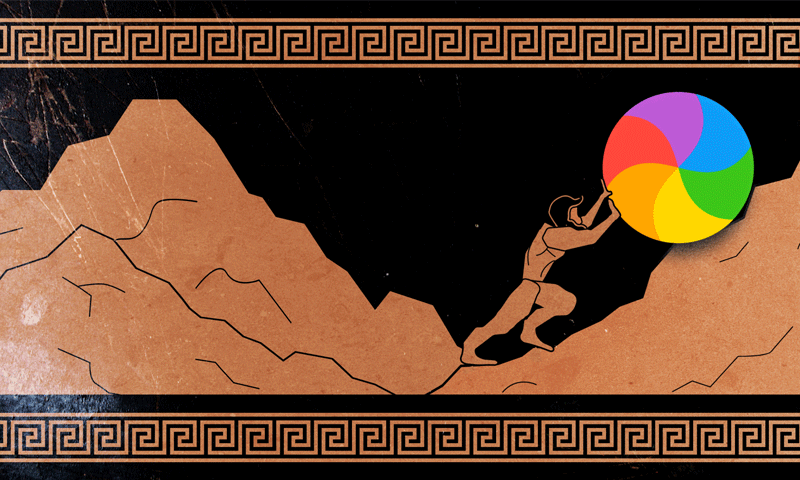Recollecting the Rosetta Stones of the Past
GIF via Giphy
Reading this title, there are two logical leaps to make. One, either we are going to talk about an ancient stone tablet, or two, we will discuss language apps and aids of the past.
In fact, the first assumption is a little closer to home, so bonus points for you if that’s where your mind went! What we want to take a general look at are artefacts of our favourite Indiana Joneses et. al. have discovered that were keys to deciphering various languages.
So, without further ado, here’s a little look!
The Rosetta Stone
Okay, yes, we are starting with the Rosetta Stone, because we would never discount such a crucial find. The Rosetta Stone was discovered by French soldiers rebuilding a fort in Egypt in 1799, in a town called, surprisingly, Rosetta. It is a granodiorite stele, which is just a fancy way of saying an igneous rock slab, carved in 196 BCE to commemorate the royal cult of Ptolemy V on the first anniversary of his coronation.
Now, as messages from the past go, that might not be on the top of everyone’s wish list of things to read, but here is why it’s so important:
The inscriptions were in both Egyptian and Greek, using hieroglyphic, demotic and Greek scripts, which means that by comparing the scripts, using the Greek that people already knew at the time of the Stone’s ‘translation’, it was possible to decipher the previously unknown Egyptian. It meant that through the work of hundreds of people, with the eventual credit for the translation going to Jean-François Champollion in 1822, we could for the first time understand the hieroglyphs of a long dead tongue. Isn’t that kind of magical?
The Raphia Decree
Why is it always in Egypt?! Not that we are complaining; the Raphia Decree is another stone inscribed in both Egyptian and Greek in hieroglyphic, demotic and Greek scripts. The slab is thought to have been carved around 217 BCE to celebrate the victory of Ptolemy IV at the Battle of Raphia.
The Raphia Decree was discovered in 1902 in the ancient Memphis, and was in fact one of a series of decrees, known as the Ptolemaic Decrees, issued under the Hellenistic Ptolemaic dynasty. E. R. Bevan is credited with translating the work, although David Klotz of Yale University has reexamined parts of the hieroglyphic text and offered some amendments. No translation is done without tweaking by others, after all.
Learning a new language? Check out our free placement test to see how your level measures up!
Decree of Canopus
via GIPHY
Okay, so there appears to be a theme here. We have the Ptolemaic dynasty to thank for all of these stone inscriptions that made translations of hieroglyphic script possible, and the Decree of Canopus is no exception. This inscription was made public in 238 BCE, for the Pharaoh Ptolemy III along with his wife and daughter, produced following the death of the daughter, honouring her as a goddess. Like the other discoveries mentioned, this tablet was written in three scripts from Egyptian and Greek, assisting in our better understanding of Ancient Egyptian. It was translated by S. Birch in 1876.
Not all Greek...
We promise, there are other ancient inscriptions in multiple languages that weren’t in the standard Egyptian/Greek setup! Take, for example, the Behistun Inscription. This was written by Darius The Great between 522 and 486 BCE, and can be found on a rock relief at Mount Behistun in Iran. The text is simple, proclaiming Darius to be king and stating his familial lines, but this is done in three cuneiform script languages; Old Persian, Elamite and Babylonian.
The Behistun Inscription is seen as the Rosetta Stone of cuneiform languages, so it is easy to appreciate its importance linguistically. Translation credit goes to L.W. King and R.C. Thompson, although earlier translations were made by Carsten Niebuhr in 1764.
Also not strictly involving Greek are the Pyrgi Tablets, discovered in an excavation in modern day Santa Severa, Italy, in 1964. The tablets speak of a dedication written around 500 BCE by the king of Caere to the Phoenician goddess Ashtaret. The tablets are inscribed in both Phoenician and Etruscan.
...but a lot of Greek
Mostly because it seems that those canny-minded inscribers going about their business bilingually were largely Greek speakers. The Cippi of Melqart were unearthed in Malta and are thought to date back to 2 BCE, and are offerings to the gods written in Ancient Greek and Phoenician. They were discovered in 1694, and publication of them allowed Phoenician writing to be understood for the first time.

GIF via Giphy
And finally, we have the Letoon Trilingual Stele. Discovered in 1973 in present-day Turkey, this was a public record that decreed the establishment of a cult. The languages used in this inscription are Lycian, Aramaic, and, you’ve guessed it, Greek. And although they are not word for word translations, they do carry the same message.
Now, we’ve looked at the past, so it’s time to look at the present, and even the future; next time we will be considering what we have in our modern world that could be considered the Rosetta Stones of the future. Until then!



